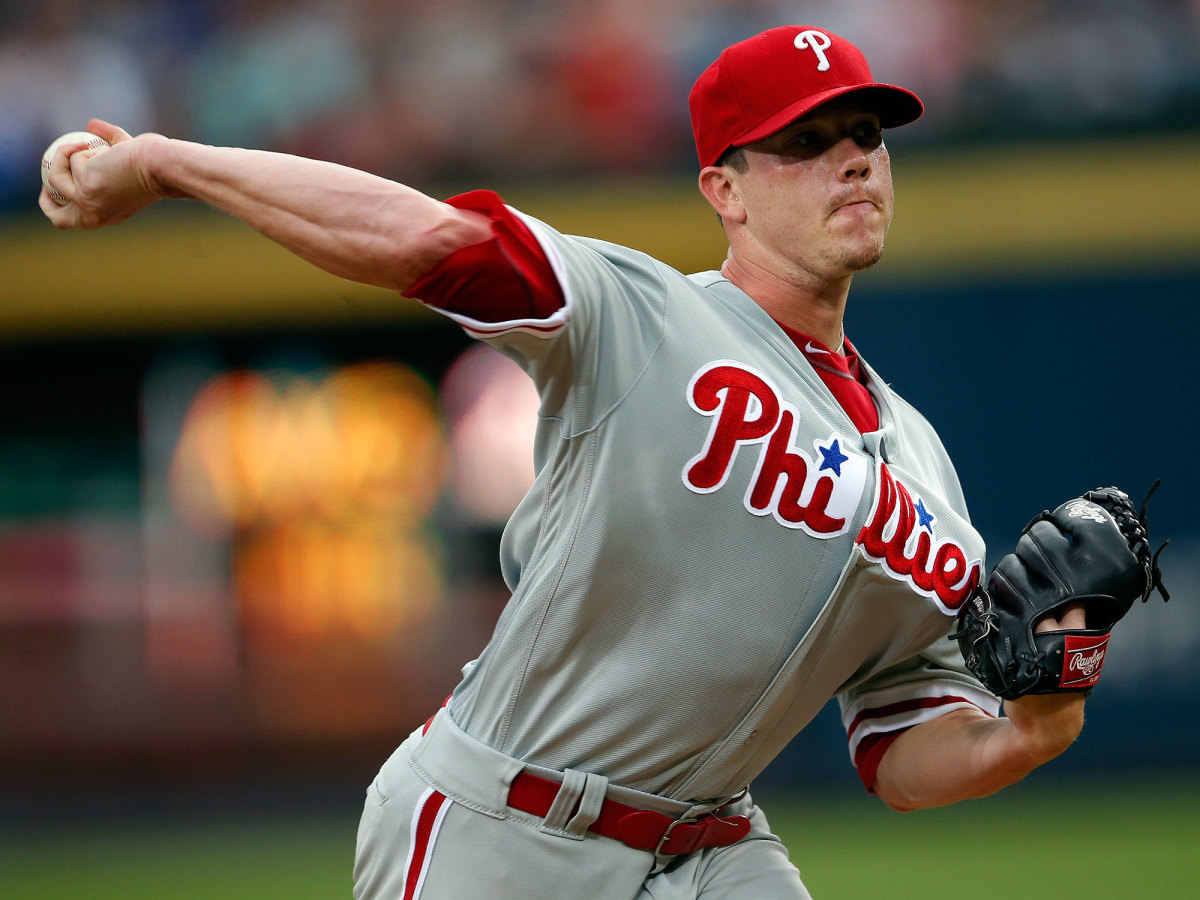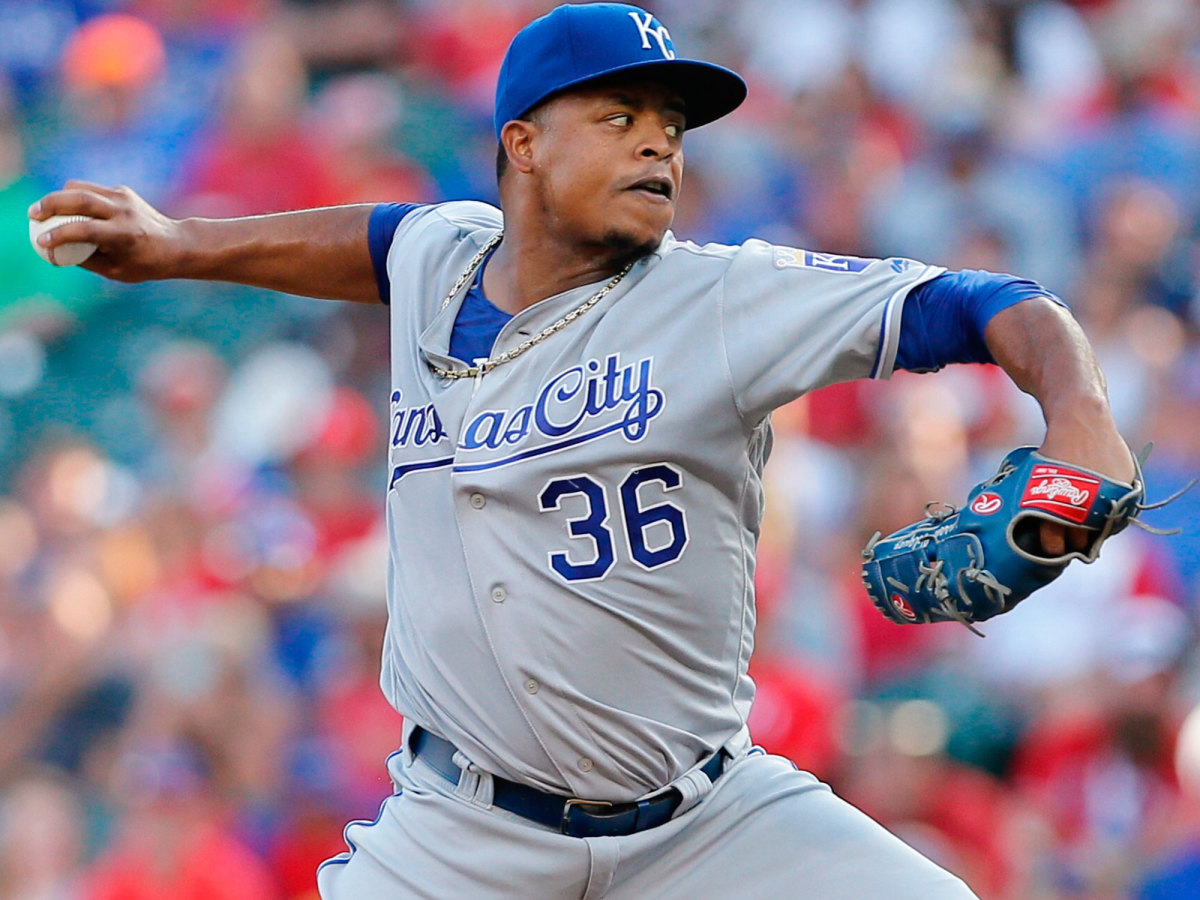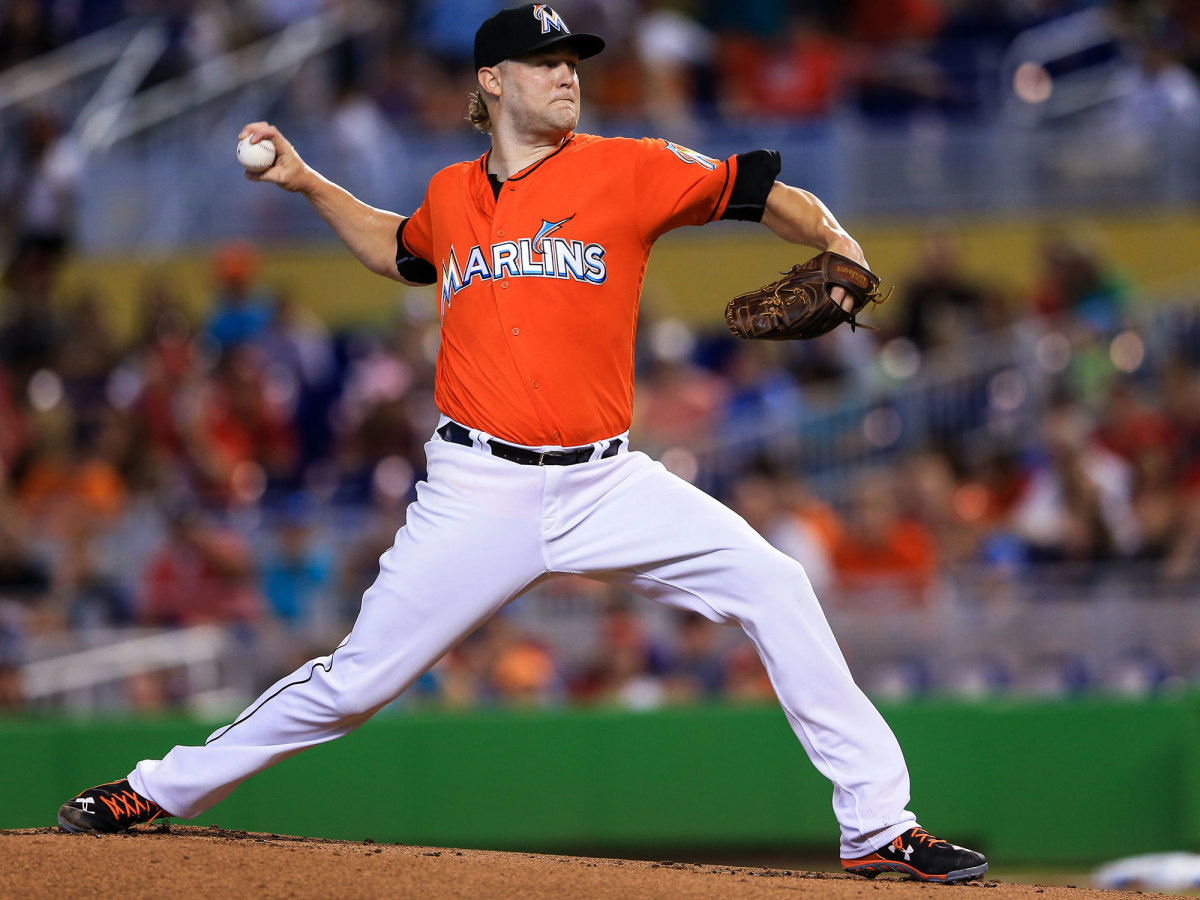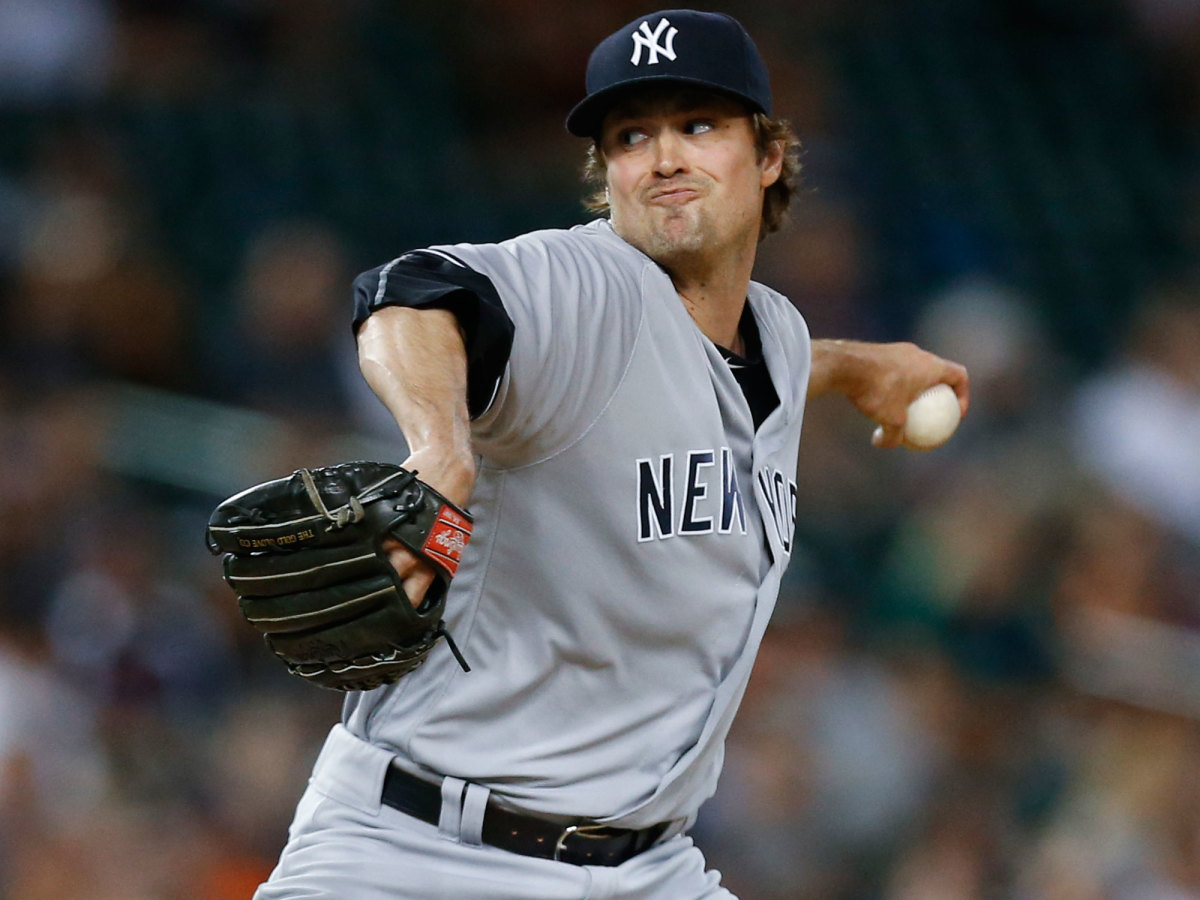The 30: Miller trade a boost for Indians, who rise in power rankings

At long last, it’s trade deadline day! Sure, teams have been making deals for weeks now and can continue to do for the rest of the season (assuming the players they trade pass through the complicated waiver system). Still, the last day for non-waiver deals can often produce unexpected and spectacular drama.
This week’s four featured teams have either already made a splash, could add to the fun with more big deals as we head down to the wire or both. Multiple teams are asking about the Phillies’ young starters. The Marlins already made one huge deal and could try to add more to their contending roster. The Royals made multiple big splashes before last year’s deadline and could do so again in 2016. Meanwhile, the Indians’ first-place perch, long championship drought and multiple team needs prompted them to go all in.
Let’s make a deal. It’s Week 17 of The 30.
Best Inter-Team Camaraderie: Melky Cabrera
In the heat of battle, it’s easy to focus on your own team’s fortunes and lose sight of what’s in the hearts and minds of your opponents. White Sox outfielder Melky Cabrera was having none of that.
Facing the cross-town rival Cubs in the eighth inning on Thursday, Cabrera ran a long way trying to chase down a Tommy La Stella foul ball headed toward the seats. With the Cubs’ bullpen right in his path, Cabrera avoided falling into any innocent-bystander relievers with some nifty footwork. Then he went a step further, taking a seat smack in the middle of the Cubs' relievers. Once again, the Melkman had delivered—some smiles.

Start Again
Blessed with some intriguing pitchers, Philadelphia is fielding offers from contenders.
30. Atlanta Braves (37–68 record, minus-138 run differential, last week: 30)
29. Cincinnati Reds (42–62, minus-137, LW: 29)
28. Tampa Bay Rays (42–61, minus-48, LW: 28)
27. Minnesota Twins (40–64, minus-79, LW: 27)
26. Arizona Diamondbacks (43–62, minus-92, LW: 26)
25. San Diego Padres (45–60, minus-54, LW: 24)
24. Milwaukee Brewers (47–56, minus-57, LW: 25)
23. Oakland A’s (47–58, minus-82, LW: 23)
22. Philadelphia Phillies (48–59, minus-104, LW: 21)
With the Phillies still at least a couple years (or more) from contending in the NL East, everyone figured starting pitcher Jeremy Hellickson would be a prime trade candidate. With a couple months left until he can test free agency, the veteran righthander figured to bolt at season’s end, making him a logical pick to get traded before that happens.
Hellickson’s recent performance has only heightened the interest among contending clubs with holes in their rotation (which is to say, nearly all of them). Heading into Saturday’s start against the Braves, Hellickson had been on a roll: In his seven most recent outings, he’d fired 45 innings, struck out 32 batters, walked just five, allowed only 33 hits and four home runs and posted a sparkling 2.20 ERA. Even that stretch doesn’t tell the full story of his streak, however. Hellickson allowed just one run on five hits (with eight strikeouts and no walks) in eight innings on July 20, then tossed six innings of no-run, one-hit ball on July 25. On Saturday, he gave up three runs in 5 2/3 innings against Atlanta, but it was a bruised right hand that ended his day early. It would be a decent-sized upset if he’s not shipped to another team by the deadline.
• What to watch for, what to know as trade deadline approaches
The bigger source of intrigue, though, is Vince Velasquez. When the Phillies acquired him last winter in a multi-player trade with the Astros for closer Ken Giles, the industry was taken aback. Sure, Giles was a talented young righthander with a strong track record. But he was also a relief pitcher, making the package of young talent going the other way—including the promising Velasquez—a surprise. When Velasquez then blazed through the league in his first eight starts as a Phillie with a 2.24 ERA and 59 strikeouts in 48 1/3 innings (while Giles struggled early on), the deal from Houston's end started to look so bad that trend pieces needed to be written about the overinflation of the relief pitcher market.
Velasquez hasn’t pitched very well lately, however: Since May 23—a period of time that includes a disabled list stint for a biceps injury—his ERA is 4.20 and opposing hitters are batting .302/.370/.476. One of the teams most interested in Velasquez is said to be Texas, which has cooled off dramatically after a hot start to the season thanks in part to a starting rotation that’s dealt with multiple injuries and erratic results. The Rangers have lots of premium prospects they could offer Philadelphia in return, including young position players who could be a good fit for a Phillies club that’s rebuilding and could use some hitters to complement their now promising pitching staff.
At this time of year, there can be more noise to process than signals. It’s possible that the Velasquez rumors could be a case of Texas's brass floating stories out there to, say, get the Rays to come down on their price tag for their multiple young starting pitchers on the trading block. Still, the rise of Philly’s staff this year has offered hope for the team’s future. It could spur a full-blown case of deadline fever today, too.

Hitting The Reset Button?
The Royals could be close to punting on 2016, making a last-ditch run at contention in '17 with a passel of free-agents-to-be the most likely bet.
21. Los Angeles Angels (47–58, plus-1, LW: 22)
20. Kansas City Royals (49–55, minus-59, LW: 18)
19. Chicago White Sox (51–54, minus-32, LW: 19)
18. New York Yankees (52–52, minus-33, LW: 17)
17. Colorado Rockies (52–53, plus-8, LW: 20)
16. Pittsburgh Pirates (52–51, minus-3, LW: 16)
Heading into 2014 trade deadline day, the Royals sat at 54–52. This was better than most of the results they’d put up during the previous 28 seasons, each of which ended without a postseason appearance, though it was still only good enough for second place in the AL Central, five games out of first. At that point, Kansas City was a fringe contender, a team that might have a shot at the postseason, though it was far from a safe bet. We know what happened the rest of the way: The Royals went 35–21 from that point on, finally crashed the October dance, then stormed all the way to the World Series.
Kansas City is not that far off that pace this year, sitting at 49–55. Still, the Royals are ninth in the wild-card standings; their losing has intensified lately; and multiple veterans on the roster would make great trade bait. Some well-placed selling could make sense.
• Is it time for Royals to throw in towel? Deadline bounty could await
The question, then, is who might Kansas City deal? The early rumors on reliever Wade Davis were that he would be moved only if a trade partner would send back a Scrooge McDuck-ian return. All that speculation got scuttled over the weekend, however, when Davis was forced out of action with right forearm discomfort, then landed on the DL.
The next logical move might be to find a match for Edinson Volquez. The 33-year-old righthander has seen his ERA swell by more than a run compared to 2015 levels, and nearly two runs versus ‘14. By fielding-independent numbers, though, he’s been pretty close to the same pitcher throughout that three-season stretch: a few too many walks, not enough strikeouts and enough weak contact induced to make him a capable back-of-the-rotation starter. Add to that his current pace to make 31 or more starts for the fifth straight year and a palatable contract that pays him the balance of his $9.5 million salary this season (plus either a $10 million mutual option or a $3 million buyout for 2017), and he could be a good fit as a back-of-the-rotation option. Kendrys Morales also has an expiring deal with a 2017 option, though there aren’t many AL contenders with gaping holes at designated hitter.
After that, the Royals would be cutting into the core of the club, and that’s not going to happen. Still, the nature of the team’s contract situations sets up next season as a potential inflection point. Eric Hosmer, Lorenzo Cain, Mike Moustakas, Alcides Escobar, Danny Duffy and several others can test free agency at the end of the 2017 season. That high number of potential free agents, combined with Alex Gordon’s major struggles after re-signing with the team on a four-year, $72 million contract, could prompt general manager Dayton Moore to think twice about inking a bunch of big deals.
Hopefully for Royals fans, 2016 represents an outlier for the AL's two-time defending champion. After next year, it could be a while before thoughts of taking the crown reemerge in Kansas City.

Cashing In?
The Marlins filled out the back of their rotation with two iffy righthanders.
15. Seattle Mariners (52–51, plus-31, LW: 14)
14. New York Mets (54–50, plus-9, LW: 13)
13. Detroit Tigers (57–48, plus-18, LW: 15)
12. Miami Marlins (57–48, plus-22, LW: 12)
11. Houston Astros (55–49, plus-38, LW: 9)
10. St. Louis Cardinals (56–49, plus-89, LW: 11)
9. Los Angeles Dodgers (59–46, plus-74, LW: 10)
Star players draw by far the most attention at deadline time. But the savviest teams also find a way to improve their rosters simply by acquiring semi-useful players to handle playing time previously allotted to ciphers, often without giving up a ton in young prospect talent.
On Friday, the Marlins fulfilled that first criterion, picking up a pair of pitchers who could fare competently down the stretch. The question is whether they gave up more what you’d normally expect for back-of-the-rotation talent, and whether the guys acquired are good enough to help lead a big second-half performance.
For years, the book on righthander Andrew Cashner was that he had huge talent, but that injuries were preventing him from rising to stardom. The Cubs’ first-round pick in 2008 pitched his first big league game in '10 but didn’t break through as a full-time starter in the majors until ‘13. Cashner did work 175 innings with a sparkling 52.5% ground-ball rate that year, but with a below-average strikeout rate that—offense-suppressing home park in San Diego notwithstanding—held him back from better results. Since then, Cashner’s performance has steadily dipped in each successive season.
• Marlins make needed but uninspiring trade to get Cashner
This year, Cashner’s been one of the most homer-prone pitchers in the National League with a near-career-worst walk rate and a fastball that’s down a couple ticks in velocity to go along with a strikeout rate that’s disappointingly near league average. Allowing just two runs on four hits in his first start as a Marlin on Sunday was, at least, a good place to start. Colin Rea’s season has looked strikingly similar to Cashner’s by ERA and Fielding Independent Average. His biggest problem, though, is his lack of control, with nearly four batters walked per nine innings. Overall, advanced metrics show Cashner near a 5.00 FIP and Rea not much better, and both pitchers rate as among the worst in the NL this year. For a Miami team that has Wei-Yin Chen on the disabled list and a gaping hole at the back of its rotation as a result, pitchers like Cashner and Rea can certainly have their place.
But the Fish might’ve given up a fair bit here, given what a couple months of Cashner, plus multiple years of control and a muted optimism for Rea’s future might typically command. Josh Naylor was Miami’s first-round pick in 2015 and posted respectable numbers as the second-youngest player in the South Atlantic League at age 19—the kind of holding-your-own-at-a-higher-level profile you hope for in a premium talent. Luis Castillo was the Marlins’ best pitching prospect, showing stellar command with a walk rate down around 4% and just two homers allowed in 100 innings. ESPN.com’s Keith Law noted the risk of Castillo ending up a reliever in the bullpen due to a lack of a better-than-average third pitch, but he also noted that Castillo is probably ready for Double A at this point, and by extension, he might not be terribly far from sniffing his way into the majors.
With the Marlins in the thick of the wild-card race and the prospect of the great Jose Fernandez leading the staff for a franchise that has only ever produced two playoff berths—but both of them being wild-card entries that turned into World Series titles—you can understand the trade. But it’s also possible that the two players involved in the deal that go on to the most successful major league careers are the ones who are not actually in the majors yet.

Leaning Left
By landing Andrew Miller from the Yankees, the Indians found a badly needed wipeout lefty for the pen, setting up a potentially exciting stretch run.
8. Texas Rangers (62–44, plus-9, LW: 8)
7. San Francisco Giants (61–44, plus-54, LW: 4)
6. Baltimore Orioles (59–45, plus-27, LW: 3)
5. Boston Red Sox (57–46, plus-84, LW: 5)
4. Cleveland Indians (60–42, plus-97, LW: 6)
3. Toronto Blue Jays (59–46, plus-81, LW: 7)
2. Washington Nationals (61–44, plus-112, LW: 2)
1. Chicago Cubs (63–41, plus-164, LW: 1)
By the numbers, Andrew Miller’s recent track record is unimpeachable. In 45 1/3 innings this year with the Yankees, Miller struck out an unfathomable 77 batters, walked just seven, allowed just 28 hits and flashed a 1.39 ERA. With a lethal fastball-slider combination, he’s on his way to a third straight dominant season, and he is signed very affordably at just $9 million a year.
Thanks to that huge ability as well as a major hole on Cleveland’s roster, Miller could be the player who provides the best fit among anyone acquired at this year’s deadline. Though a few different pitchers have thrown some innings in high-leverage spots this year, manager Terry Francona has entrusted most of those innings to righthanders Cody Allen and Bryan Shaw. Miller instantly zooms past everyone for the title of best arm in the 'pen, gives the Indians the lights-out lefty they lacked and pushes Shaw down to a lower-leverage role, a decent idea given his spikes in walk- and home-run rates this year.
• Breaking down Andrew Miller trade for Yankees, Indians
The Indians' might miss Clint Frazier, though. The 21-year-old outfielder has flashed power, speed and a playable batting eye despite being very young to have made it all the way to Triple A. He was ranked as the 27th-best prospect in the game by MLB.com this year and has a chance to be a key building-block player for a New York team that was sorely lacking them before deadline week but now looks in better shape after lucrative deals for Aroldis Chapman and Miller. That said, you make the trade anyway, given how much Cleveland has going for it, along with its current first-place standard and what the team might be capable of accomplishing.
As for the scuttled deal for Brewers catcher Jonathan Lucroy: Fangraphs writer Dave Cameron has a good piece on why we shouldn’t be screaming at Lucroy (or anybody else) over his veto. But blame or not, the Indians might still try to pull off another upgrade or two by the deadline. There are very few (and maybe zero) catchers out there who can both play quality defense and hit, except for Lucroy. Michael Brantley’s continued struggle to make it back to the lineup as he rehabs from a shoulder injury, meanwhile, makes one wonder if Cleveland might instead acquire another outfielder to supplement what it already has, even if said player is a notch or two down from Miller and Lucroy.
